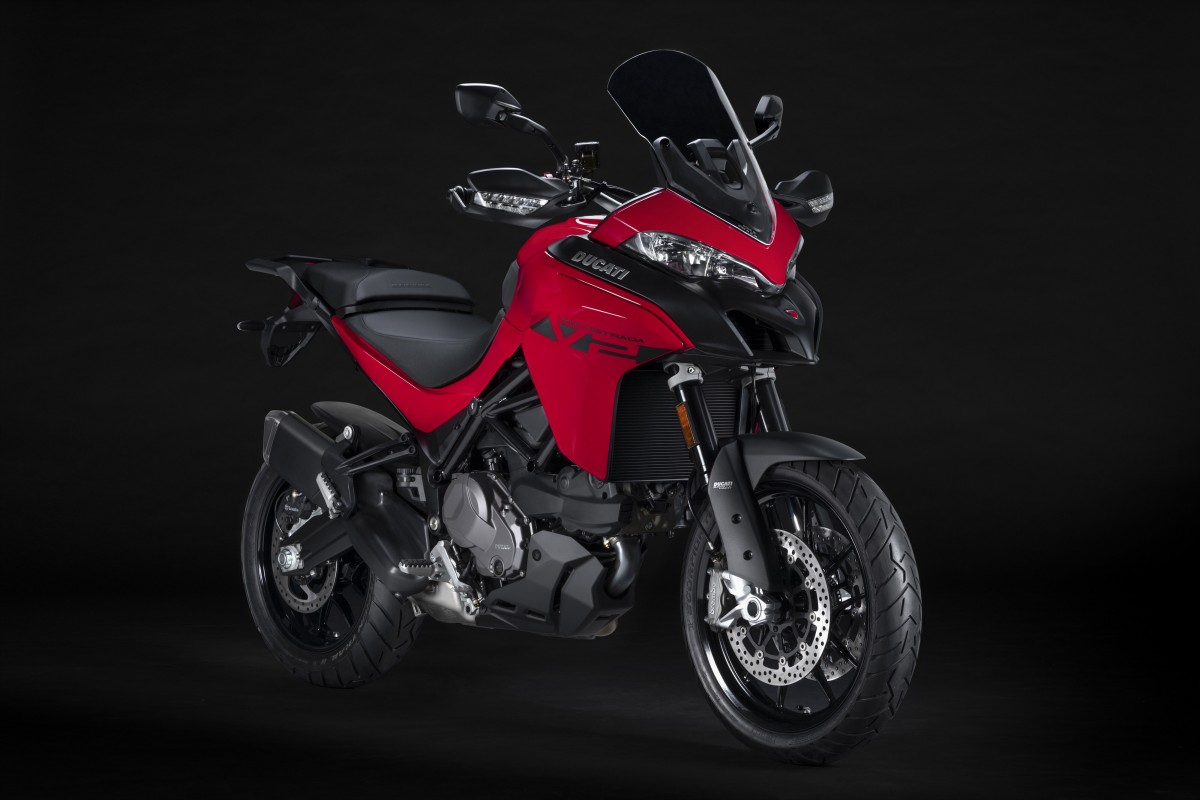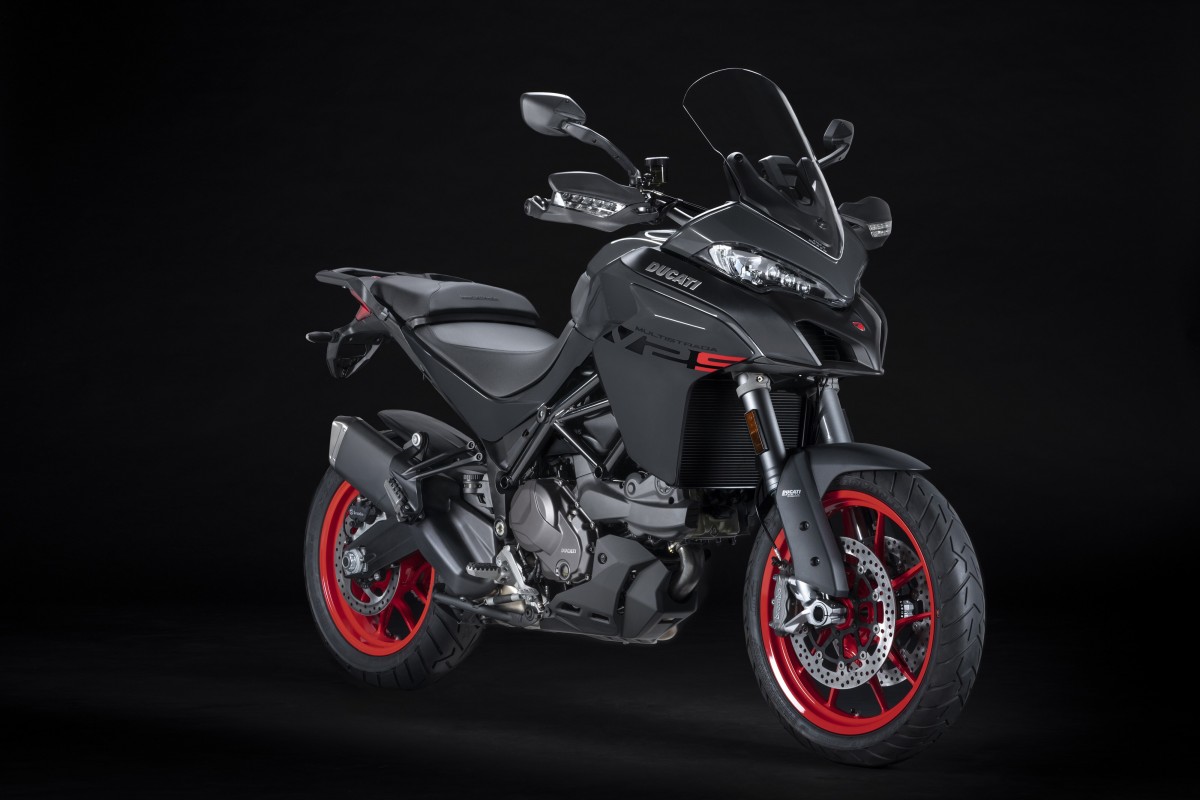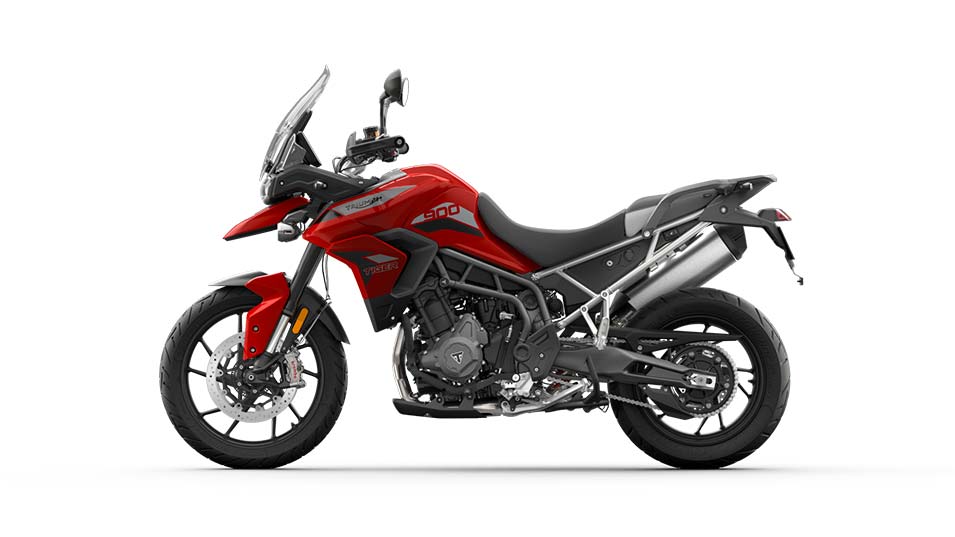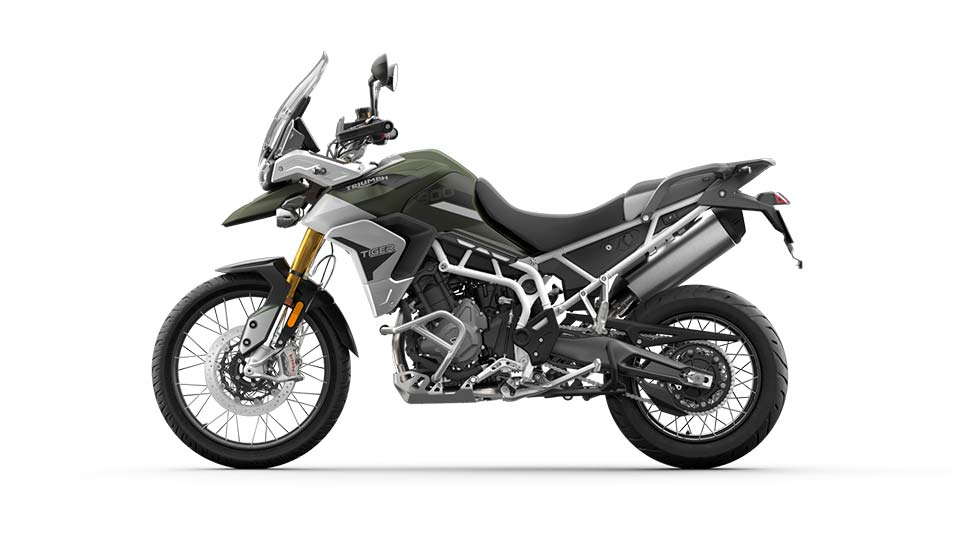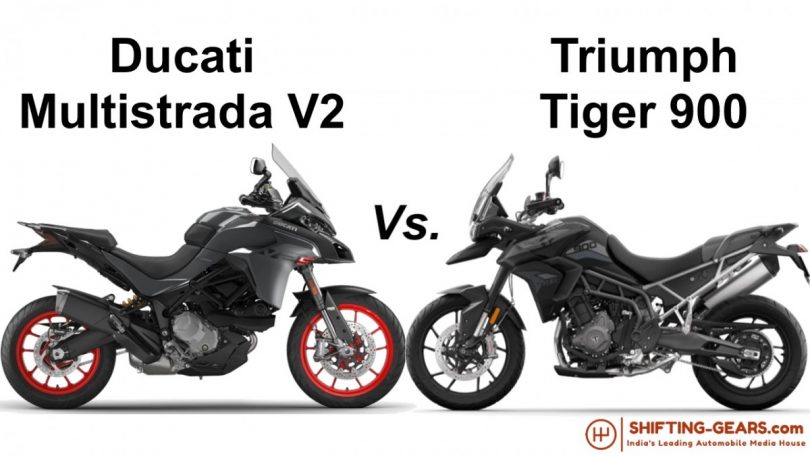Ducati recently added the new Multistrada V2 to its portfolio. The new model serves as the entry point to the Multistrada lineup. The new Multistrada V2 comes with new features and equipment. In this comparison, we pin the latest entrant in the segment with the Triumph Tiger 900. The Tiger 900 is one of the most popular bikes in the Triumph’s lineup. The specification comparison along with the price will help you decide which way to go – Italian or British.
Triumph Tiger 900 Vs. Ducati Multistrada V2 – Price & Variants
The Triumph Tiger 900 is available in India in three variants – Tiger 900 GT, Tiger 900 Rally and Tiger 900 Rally Pro. The GT variant is the road-focused variant, while the Rally and Rally Pro are off-road focused. The price for the Tiger 900 GT is INR 13.70 lakh ex-showroom. It is available in three colours – Pure White, Sapphire Black and Korosi Red. The latter two colour options bump up the ex-showroom price by INR 20,000. The off-road-focused Rally and Rally Pro come with a sticker price of INR 14.35 lakh ex-showroom and INR 15.50 lakh ex-showroom. The Rally models are available in two colour options – Pure White and Matt Khaki Green. The latter colour option costs an additional INR 30,000.
On the other hand, the Ducati Multistrada V2 is available in V2 and V2 S. The standard V2 comes with a sticker price of INR 14.65 lakh ex-showroom. In comparison, the price of the V2 S starts at INR 16.65 lakh. The standard V2 is available with only one colour option – Ducati Red with gloss black frame and black rims. The V2 S variant is available with two – Street Grey with black frame and “GP Red” wheel rims and Ducati Red paint scheme with black frame and black rims with red tags. The former colour option comes with an INR 16.84 lakh ex-showroom sticker price.
Triumph Tiger 900 Vs. Ducati Multistrada V2 – Powertrain
Both the bikes use very different engine configurations. The Triumph uses an 888cc liquid-cooled inline-3 cylinder engine. It uses a 12-valve Double Over Head Camshaft valvetrain. The engine produces 95.2 PS of peak power and 87 Nm of torque. With the introduction of the Tiger 900, the company also uses a new ‘T-Plane’ crankshaft. The new firing order aims to improve tractability down low while maintaining the top-end power. The engine is coupled to a 6-speed gearbox with a slip and assist clutch.
The Ducati Multistrada V2 uses an 11-degree Testastretta engine with 937cc. The liquid-cooled engine comes with a 4-valve Desmodromic valvetrain. The L-Twin engine in the Multistrada V2 also gets new connecting rods and a new 8-disc hydraulic clutch. The updates to the engine shave off roughly 2 kg of weight. The engine produces a peak power of 112.8 PS and 96 Nm of torque. The torque is 2 Nm more than the old Multistrada 950. The gearbox on the Multistrada V2 is a 6-speed unit with a slip and assist function clutch. In addition to this, the clutch also gets hydraulic control.
Triumph Tiger 900 Vs. Ducati Multistrada V2 – Suspension
The Tiger 900 GT uses 45 mm upside-down Marzocchi forks at the front, which are adjustable for rebound and compression damping. At the rear, it uses a Marzocchi rear suspension with adjustability for rebound and compression damping and preload. The front has a suspension travel of 180 mm, while the rear has 170 mm of travel. The Tiger 900 Rally and Rally Pro variants use a Showa 45 mm upside-down forks with manual adjustability for preload and rebound and compression damping adjustment. The front suspension travel is 240 mm. At the rear, it utilises a Showa rear suspension also with adjustability for preload, rebound and compression. The rear gets suspension travel of 230 mm.
On the other hand, the Multistrada V2 features a 48 mm upside-down fork with 170 mm suspension travel. The front forks are also adjustable for preload, rebound and compression damping. In addition to this, the rear suspension is also fully adjustable and has a travel of 170 mm. The spring on the rear suspension is progressive for improved comfort even when the bike is loaded. In the V2 S, the bike uses the Ducati Skyhook Suspension EVO semi-active suspension. It uses 48 mm upside-down forks and a rear suspension by SACHS. The electronic suspension’s semi-active control can guarantee the ideal set-up of the vehicle, improving safety and comfort.
Triumph Tiger 900 Vs. Ducati Multistrada V2 – Brakes
All the variants of the Tiger 900 use twin 320 mm discs at the front with Brembo Stylema monoblock calipers. In addition to this, it also gets a radial master cylinder. The brakes at the rear use a single 255 mm disc brake with a single-piston Brembo caliper.
In the case of the Ducati, the entire Multistrada V2 lineup uses 320 mm discs with Brembo M4-32 monoblock brakes at the front. The rear brakes on the lineup use a 265 mm disc with a single-piston Brembo caliper.
Triumph Tiger 900 Vs. Ducati Multistrada V2 – Dimensions
The Triumph Tiger 900 GT has an adjustable seat height between 810mm and 830 mm. In the case of the Tiger Rally and Rally Pro, the seat height is between 850mm and 870 mm. The wheelbase of the Tiger GT is 1556 mm, while that of the Rally models is 1551 mm. The motorcycle’s dry weight for the GT, Rally and Rally Pro models is 196 kg, 201 kg and 206 kg.
The Ducati Multistrada V2 and V2 S do not get an adjustable seat height and are 830 mm high. Wheelbase for both the variants stands at 1598 mm. The Multistrada V2 has a dry and kerb weight of 199 kg and 222 kg. At the same time, the Multistrada V2 S tips the scales at 202 kg dry and 225 kg kerb.
Also Read: Ducati launches Multistrada V2 & V2 S in India, starts at INR 14.65 lakh
